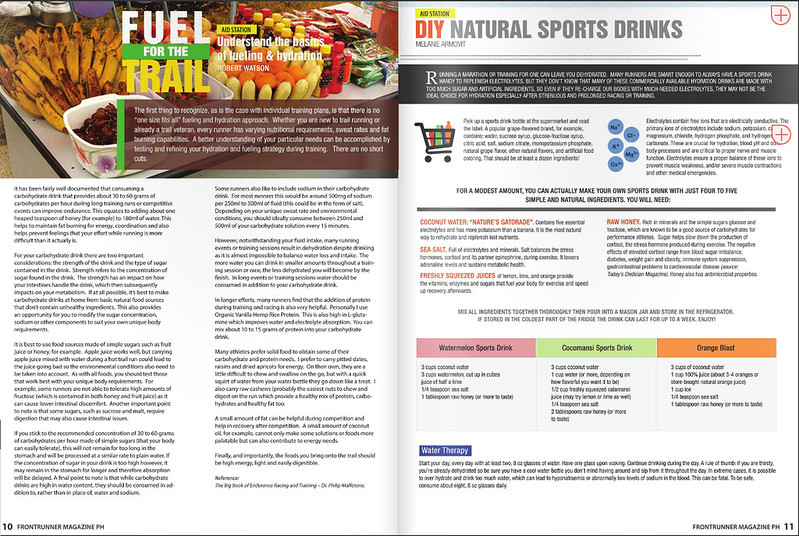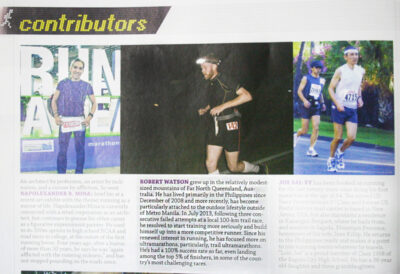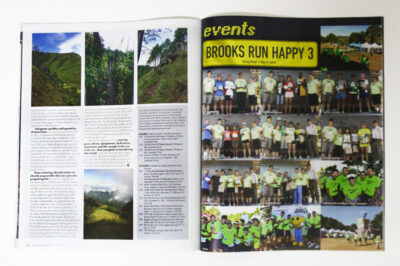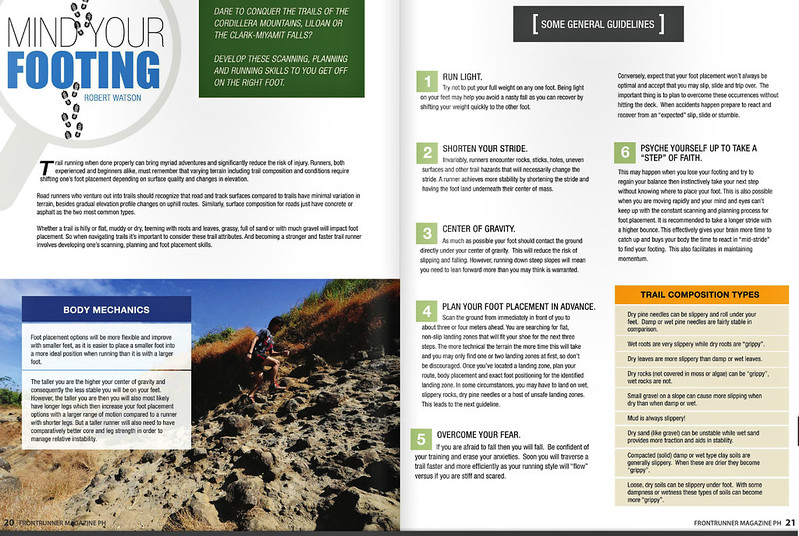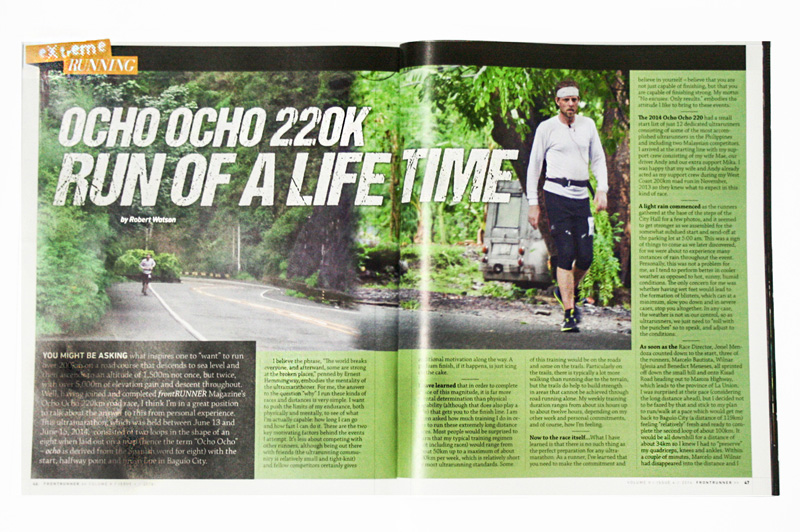[vc_row equal_height=”yes” content_placement=”top” css=”.vc_custom_1481476949915{margin-bottom: 5vh !important;}”][vc_column offset=”vc_col-lg-8 vc_col-md-8″][woodmart_image img_align=”center” click_action=”lightbox” woodmart_css_id=”6271f6da2a65d” img_id=”7140″ display_inline=”no” parallax_scroll=”no” responsive_spacing=”eyJwYXJhbV90eXBlIjoid29vZG1hcnRfcmVzcG9uc2l2ZV9zcGFjaW5nIiwic2VsZWN0b3JfaWQiOiI2MjcxZjZkYTJhNjVkIiwic2hvcnRjb2RlIjoid29vZG1hcnRfaW1hZ2UiLCJkYXRhIjp7InRhYmxldCI6e30sIm1vYmlsZSI6e319fQ==” woodmart_box_shadow=”no” wd_hide_on_desktop=”no” wd_hide_on_tablet=”no” wd_hide_on_mobile=”no” img_size=”full”]
[woodmart_text_block woodmart_css_id=”6271f74257933″ woodmart_inline=”no” responsive_spacing=”eyJwYXJhbV90eXBlIjoid29vZG1hcnRfcmVzcG9uc2l2ZV9zcGFjaW5nIiwic2VsZWN0b3JfaWQiOiI2MjcxZjc0MjU3OTMzIiwic2hvcnRjb2RlIjoid29vZG1hcnRfdGV4dF9ibG9jayIsImRhdGEiOnsidGFibGV0Ijp7fSwibW9iaWxlIjp7fX19″ parallax_scroll=”no” wd_hide_on_desktop=”no” wd_hide_on_tablet=”no” wd_hide_on_mobile=”no”]
If you are strictly a road runner and have only attempted and/or completed perhaps up to a marathon distance (42.195 km or 26 miles), or if you are a beginner in regards to trail running, you may be wondering what it takes to prepare so that you are confident to try (and hopefully complete) a trail marathon or ultramarathon. Well to give you a better idea of what you may be in for, I’d encourage you to undertake this small exercise in your mind’s eye: Think of the longest road run you have ever completed. Think of how much effort this took and how you felt during and at the completion of the event. Hold that thought for a moment; then in your mind’s eye extend this distance out to 42 km, then 50 km, then 50 miles (80 km) then 100 km or even out to 100 miles (or 160 km, which is almost four back-to-back standard marathons!). How are you feeling now?
Let’s not stop there though. Let’s move your run off the roads and onto the trails. Trails consist of dirt, loose gravel or rocky roads with uneven terrain, potholes and culverts to traverse. Trails also consist of single-track routes with terrain such as mossy rocks, gravel, dirt, mud and tree roots to navigate. There are hanging bridges made of wooden or metal planks and wire to traverse. There are also muddy vegetable and rice terraces to negotiate and small streams, irrigation channels and even larger rivers to cross. There may also be limited sections of concreted roads and concreted tire paths to negotiate.
Then let’s throw in anywhere between 3,000 and 10,000 meters of climbs and descents throughout the course. The upper end of this range is significantly more in terms of elevation gain (from sea level) than climbing and descending Mt. Everest, the world’s tallest mountain.
You must be feeling tired and overwhelmed by this small exercise by now; but we’re not yet through. In addition to distance, elevation and terrain, we must also take weather conditions into account. In the Philippines and particularly in the mountains, weather is unpredictable and ranges from hot temperatures (around 40 degrees Celsius in the sun) and clear conditions to torrential rains, sub-zero temperatures, strong winds and blinding fog/clouds. All these conditions and anything in between the two extremes can be experienced throughout the duration of any race.
And we are still not finished yet. Sections of the race will need to be done in complete darkness: no street lights; no lights from houses to light the way. Runners need to negotiate their own way through the course with headlights or hand-held torches.
All nutrition, hydration and gear must be carried with the runner as distances between aid stations (places where you can eat and refill your hydration gear) may range anywhere between 8 km and 20 km. Depending on the terrain and the fitness level of the runner, it can take anywhere between one hour and up to almost six hours to move from one aid station to the next. So between these points, runners need to be self-sufficient. There are usually no shops where sustenance can be purchased and very few houses along the trails. Warm and water-proof clothing also needs to be packed in case of adverse weather conditions. The weight of this additional gear can range anywhere from 2 kg up to 5 kg, depending on the individual runner’s requirements or level of risk taking.
If you did not think this was hard enough, now you need to complete the event within the time limit set by the race organizers. For the longer events, your time limit could be anywhere up to 48 hours. In order to have a chance of completing the event within the cutoff, there shall be little chance to rest and almost no chance to sleep. Sleep, you hear me say? Why would I want to be sleeping in the middle of a race? Well specifically for the longer distance events over 100 km in length and unless you are an elite athlete, you will most likely require one or more rest/sleep breaks to let your body relax and rejuvenate a little. If you consider that you could be on your feet for up to two days in the longer events, then you will start to understand the enormity of what your body goes through. But mostly the only stops will be to refuel, rehydrate, to adjust gear, change clothes, shoes, socks, etc., and then you continue on.
So you might be asking what skills need to be trained or developed to complete an event such as this. Suffice to say that there are many new skills to be developed over and above those that you developed whilst running on the roads. So here goes:
[/woodmart_text_block][vc_row_inner][vc_column_inner]
An “iron” will. A “never give up” attitude.
This is a mental (rather than a physical) trait. And this can be developed primarily through experience. This is what keeps you going when your body says “stop;” when your energy is so depleted that putting one foot in front of the other seems almost impossible; when you are so tired you are walking like a drunkard and almost falling asleep on your feet; when your joints, muscles and tendons feel like a hammer has pounded them the whole day. This is the key attribute that keeps you going. And it can be improved with training and experience. You learn to push through what your body is experiencing. You learn to give your mind control over your body (rather than the other way around). Your ability to keep on moving forward and to ignore the pain will help get you to the finish line.
Significant volumes of running training.
This not only involves significant distance (I’d suggest at least a minimum of 80 km per week for the longer events) but also what is termed “time on feet.” Some events last for up to two days (48 hours). For best results, training should be undertaken as closely as possible on similar terrain, with similar elevation gains and losses and in varying weather conditions all to (as closely as possible) simulate race day conditions, course terrain and elevation changes.
Significant volumes of walking/hiking on similar terrain as the race route.
You might be asking why one walks/hikes in a marathon or ultra trail “run”? Well in the world of ultramarathons (and definitely trail ultramarathons) there are always stages of the event where runners walk or hike. Runners may choose to walk on steep uphill and downhill sections, extremely technical terrain, or just so they can regain some strength from the exertion already undertaken in preparation for what is still to come. Once again, “time on feet” is an important criterion here.
Adequate quality and quantity of nutrition
can also not be overlooked as this will impact on training quality as well as the race day condition of the runner. Nutritional requirements for runners will vary depending on age, gender, current physical condition, training type and volume. But suffice to say that large quantities of vegetables and fruits, quality sources of protein, healthy fats, unprocessed forms of carbohydrates and lots of water should form the basis of a solid nutritional plan for training and event preparation.
Your training should mimic as closely as possible the race you are preparing for.
If there is significant elevation gain and descent on the course then you need to incorporate many more uphills and downhills into your training. If there are lots of technical, single-track trails to negotiate then you need to develop your footwork in order that you are comfortable in negotiating this terrain come race day. If the weather is likely to be hot then train in the heat. If the course is at elevation, try to train at or above that elevation at least in the last few weeks prior to the event. If you just train on the roads then this is not going to be the ideal training ground to get you to the finish line on race day. Road running uses a more limited set of muscle groups than running on the trails, so you may find yourself lacking in vital areas come race day and particularly as the you enter the later sections of the course. Also, with road running you can enter the “zone” and not have to think so much about foot placement, etc. On the trails, if you enter the “zone” as we say, you may wake up and find yourself tumbling down the side of a cliff! So it’s imperative to have 100% focus all of the time to prevent possible injury whilst on the trails.
The final suggestion is to test the gear, shoes, equipment, hydration, nutrition and the weight to be carried, etc. that you plan to use during the event.
Test this during your longer runs/hikes whilst training as this will give you the ability to make changes before the event rather than having to deal with problems during race day itself.
[/vc_column_inner][/vc_row_inner][woodmart_text_block woodmart_css_id=”6271fc25ed74f” woodmart_inline=”no” responsive_spacing=”eyJwYXJhbV90eXBlIjoid29vZG1hcnRfcmVzcG9uc2l2ZV9zcGFjaW5nIiwic2VsZWN0b3JfaWQiOiI2MjcxZmMyNWVkNzRmIiwic2hvcnRjb2RlIjoid29vZG1hcnRfdGV4dF9ibG9jayIsImRhdGEiOnsidGFibGV0Ijp7fSwibW9iaWxlIjp7fX19″ parallax_scroll=”no” wd_hide_on_desktop=”no” wd_hide_on_tablet=”no” wd_hide_on_mobile=”no”]You might be wondering what gives me, the author, the knowledge to be able to “authoritatively” recommend the above approach to preparing for a trail marathon/ultramarathon event. Well in my opinion,
failure is the best way to prepare for
success. And success is then validation of the changes you implement to overcome failure. I can tell you that as an ultrarunner, I have had my fair share of failure but also some successes as well:[/woodmart_text_block][woodmart_title tag=”h3″ woodmart_css_id=”627208fbb4054″ title=”Failures (I like to call them “learning experiences”)” responsive_spacing=”eyJwYXJhbV90eXBlIjoid29vZG1hcnRfcmVzcG9uc2l2ZV9zcGFjaW5nIiwic2VsZWN0b3JfaWQiOiI2MjcyMDhmYmI0MDU0Iiwic2hvcnRjb2RlIjoid29vZG1hcnRfdGl0bGUiLCJkYXRhIjp7InRhYmxldCI6e30sIm1vYmlsZSI6e319fQ==”][woodmart_timeline woodmart_css_id=”62720d336b4d7″ dots_color=”eyJwYXJhbV90eXBlIjoid29vZG1hcnRfY29sb3JwaWNrZXIiLCJjc3NfYXJncyI6eyJiYWNrZ3JvdW5kLWNvbG9yIjpbIiAud29vZG1hcnQtdGltZWxpbmUtZG90Il19LCJzZWxlY3Rvcl9pZCI6IjYyNzIwZDMzNmI0ZDciLCJkYXRhIjp7ImRlc2t0b3AiOiIjMTE0NjM5In19″][woodmart_timeline_item woodmart_css_id=”6272098335f82″ title_primary=”2011 The North Face 100 Camsur, Philippines (100-km trail ultramarathon)”]Did not Finish (DNF)
Completed 70 km[/woodmart_timeline_item][woodmart_timeline_item position=”right” woodmart_css_id=”627209c492682″ title_primary=”2012 The North Face 100 Baguio/Benguet, Philippines”]Did not Finish (DNF)
Completed 53 km[/woodmart_timeline_item][woodmart_timeline_item woodmart_css_id=”627209fc44abb” title_primary=”2013 The North Face 100 Baguio-Benguet, Philippines”]Did not Finish (DNF)
Completed 71 km[/woodmart_timeline_item][woodmart_timeline_item position=”right” woodmart_css_id=”62720a6f2001c” title_primary=”2014 Hardcore 100 Miles Trail Ultra Marathon (H1), Kayapa, Nueva Vizcaya, Philippines”]Did not Finish (DNF)
Completed 102 km[/woodmart_timeline_item][/woodmart_timeline][vc_row_inner woodmart_css_id=”62720dadc4b66″ responsive_spacing=”eyJwYXJhbV90eXBlIjoid29vZG1hcnRfcmVzcG9uc2l2ZV9zcGFjaW5nIiwic2VsZWN0b3JfaWQiOiI2MjcyMGRhZGM0YjY2Iiwic2hvcnRjb2RlIjoidmNfcm93X2lubmVyIiwiZGF0YSI6eyJ0YWJsZXQiOnt9LCJtb2JpbGUiOnt9fX0=” mobile_bg_img_hidden=”no” tablet_bg_img_hidden=”no” woodmart_parallax=”0″ woodmart_gradient_switch=”no” woodmart_box_shadow=”no” wd_z_index=”no” woodmart_disable_overflow=”0″ row_reverse_mobile=”0″ row_reverse_tablet=”0″][vc_column_inner css=”.vc_custom_1651641772256{margin-top: 40px !important;}” woodmart_css_id=”62720da61f858″ parallax_scroll=”no” woodmart_sticky_column=”false” wd_collapsible_content_switcher=”no” wd_column_role_offcanvas_desktop=”no” wd_column_role_offcanvas_tablet=”no” wd_column_role_offcanvas_mobile=”no” wd_column_role_content_desktop=”no” wd_column_role_content_tablet=”no” wd_column_role_content_mobile=”no” mobile_bg_img_hidden=”no” tablet_bg_img_hidden=”no” woodmart_parallax=”0″ woodmart_box_shadow=”no” responsive_spacing=”eyJwYXJhbV90eXBlIjoid29vZG1hcnRfcmVzcG9uc2l2ZV9zcGFjaW5nIiwic2VsZWN0b3JfaWQiOiI2MjcyMGRhNjFmODU4Iiwic2hvcnRjb2RlIjoidmNfY29sdW1uX2lubmVyIiwiZGF0YSI6eyJ0YWJsZXQiOnt9LCJtb2JpbGUiOnt9fX0=” wd_z_index=”no”][woodmart_title tag=”h3″ woodmart_css_id=”6272108e66763″ title=”Successes” responsive_spacing=”eyJwYXJhbV90eXBlIjoid29vZG1hcnRfcmVzcG9uc2l2ZV9zcGFjaW5nIiwic2VsZWN0b3JfaWQiOiI2MjcyMTA4ZTY2NzYzIiwic2hvcnRjb2RlIjoid29vZG1hcnRfdGl0bGUiLCJkYXRhIjp7InRhYmxldCI6e30sIm1vYmlsZSI6e319fQ==” css=”.vc_custom_1651642521974{margin-top: 40px !important;}” after_title=”validation of changes made due to past failures”][/vc_column_inner][/vc_row_inner][vc_row_inner][vc_column_inner width=”1/3″]
out of 112 finishers
(9:06:40)
1st Valley Trail Challenge
57km Ultra Marathon
Nuvali, Sta. Rosa, Laguna
June 18, 2011
[/vc_column_inner][vc_column_inner width=”1/3″]
out of 115 finishers
(6:29:24)
Clark-Miyamit Falls Trail Marathon
42km
Clark, Pampanga
September 22, 2013
[/vc_column_inner][vc_column_inner width=”1/3″]
out of 50 finishers
(7:15:59)
4th Mt. Pinatubo
50km Ultra Trail Challenge
Tarlac
October 13, 2013
[/vc_column_inner][/vc_row_inner][vc_row_inner][vc_column_inner width=”1/3″]
out of 41 finishers
(47: 38:29)
1st West Coast Road Ultra Marathon Race
200km
Subic to Alaminos
November 1-3, 2013
[/vc_column_inner][vc_column_inner width=”1/3″]
out of 95 finishers
(14:42:48)
Clark-Miyamit Falls Trail Ultra Marathon
50 miles
Clark, Pampanga
November 24, 2013
[/vc_column_inner][vc_column_inner width=”1/3″]
out of 253 finishers
(14:09:38)
Bataan Death March 102K
Road Ultra Marathon
Mariveles, Bataan to San Fernando, Pampanga
March 1-2, 2014
[/vc_column_inner][/vc_row_inner][vc_row_inner][vc_column_inner width=”1/3″]
out of 71 finishers
(5:35:40)
3rd Ugo Trail Marathon
42km
Kayapa, Nueva Vizcaya
March 30, 2014
[/vc_column_inner][vc_column_inner width=”1/3″]
out of 22 finishers
(6:12:00)
Baguio to Aringay 62km
Road Ultra Marathon
La Union
April 20, 2014
[/vc_column_inner][vc_column_inner width=”1/3″]
(1:16:00)
Run for the Trails
12km
Baguio City
April 27, 2014
[/vc_column_inner][/vc_row_inner][/vc_column][vc_column woodmart_sticky_column=”true” offset=”vc_col-lg-4 vc_col-md-4″ css=”.vc_custom_1494491003828{margin-bottom: 15px !important;}”][woodmart_title size=”extra-large” align=”left” woodmart_css_id=”6271f6f784733″ title=”Training for the Trails” responsive_spacing=”eyJwYXJhbV90eXBlIjoid29vZG1hcnRfcmVzcG9uc2l2ZV9zcGFjaW5nIiwic2VsZWN0b3JfaWQiOiI2MjcxZjZmNzg0NzMzIiwic2hvcnRjb2RlIjoid29vZG1hcnRfdGl0bGUiLCJkYXRhIjp7InRhYmxldCI6e30sIm1vYmlsZSI6e319fQ==” css=”.vc_custom_1651635963169{margin-bottom: 0px !important;}”][woodmart_text_block text_font_family=”primary” text_font_size=”s” text_font_weight=”600″ text_color=”custom” woodmart_css_id=”6271f6fc97383″ parallax_scroll=”no” woodmart_inline=”no” wd_hide_on_desktop=”no” wd_hide_on_tablet_landscape=”no” wd_hide_on_tablet=”no” wd_hide_on_mobile=”no” css=”.vc_custom_1651635975197{margin-bottom: 25px !important;}” text_color_custom=”eyJwYXJhbV90eXBlIjoid29vZG1hcnRfY29sb3JwaWNrZXIiLCJjc3NfYXJncyI6eyJjb2xvciI6WyIud2QtdGV4dC1ibG9jayJdfSwic2VsZWN0b3JfaWQiOiI2MjcxZjZmYzk3MzgzIiwiZGF0YSI6eyJkZXNrdG9wIjoiIzk4OTg5OCJ9fQ==” responsive_spacing=”eyJwYXJhbV90eXBlIjoid29vZG1hcnRfcmVzcG9uc2l2ZV9zcGFjaW5nIiwic2VsZWN0b3JfaWQiOiI2MjcxZjZmYzk3MzgzIiwic2hvcnRjb2RlIjoid29vZG1hcnRfdGV4dF9ibG9jayIsImRhdGEiOnsidGFibGV0Ijp7fSwibW9iaWxlIjp7fX19″]How to complete a trail ultramarathon with confidence[/woodmart_text_block][woodmart_text_block woodmart_css_id=”6271f71d1b5f7″ css=”.vc_custom_1651636010620{margin-bottom: 45px !important;}” parallax_scroll=”no” woodmart_inline=”no” wd_hide_on_desktop=”no” wd_hide_on_tablet_landscape=”no” wd_hide_on_tablet=”no” wd_hide_on_mobile=”no” responsive_spacing=”eyJwYXJhbV90eXBlIjoid29vZG1hcnRfcmVzcG9uc2l2ZV9zcGFjaW5nIiwic2VsZWN0b3JfaWQiOiI2MjcxZjcxZDFiNWY3Iiwic2hvcnRjb2RlIjoid29vZG1hcnRfdGV4dF9ibG9jayIsImRhdGEiOnsidGFibGV0Ijp7fSwibW9iaWxlIjp7fX19″]Front Runner Magazine[/woodmart_text_block][vc_row_inner equal_height=”yes” content_placement=”middle”][vc_column_inner width=”5/12″ css=”.vc_custom_1481476631480{margin-bottom: 20px !important;}”][/vc_column_inner][vc_column_inner width=”7/12″ css=”.vc_custom_1481476640791{margin-bottom: 20px !important;}”]
[/vc_column_inner][/vc_row_inner][/vc_column][/vc_row]
